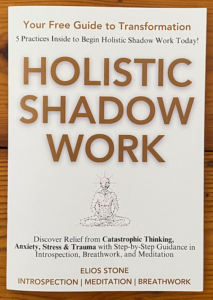The Bittersweet Taste of Poison
Your belief has more power than the medicine itself—so what are you choosing to believe?
This blog is about power. Not the kind you can grab or hoard, but the quieter kind. The power of belief. The kind of belief that shapes your reality, even when you don’t realise it.
Here’s the wild part: your subconscious mind doesn’t know the difference between truth and repetition. You can literally say things to yourself that don’t feel true yet, and with time, those things can become your reality—physically, emotionally, and energetically. That’s the beauty and the risk. Because belief works both ways.
We’re going to explore something called the placebo effect, which you’ve probably heard of. But we’re also going to look at its lesser-known shadow, the nocebo effect—and how that’s operating in your life whether you realise it or not.
This piece also dives into genetics and how your genes are not your fate. You’ll learn how your physiology, your emotions, and your energetic body are all being influenced, every single day, by your beliefs. That’s not spiritual fluff—that’s science.
This isn’t about rejecting medicine. It’s about reclaiming your role in your own healing. And that begins with understanding how belief can either trap you in illness or liberate you into health.
Let’s get into it.
How Are You Feeling?
What do you reach for when you’re not okay?
Let’s start with something simple that most people skip: how are you actually feeling today? Physically, emotionally—have you even paused to check? And if you’re not feeling great, what do you do about it?
Most of us reach for something to change the way we feel. Sometimes it’s food, sometimes it’s distraction, sometimes it’s a person, or a scroll on a screen. And sometimes it’s a drug—paracetamol, ibuprofen, or something stronger.
I’ve done all of the above. I’ve used pharmaceuticals to suppress symptoms, to mask discomfort, to get through the day. And, like many, I’ve suffered the side effects too.
If you’ve followed my journey even a little, you’ll know I’ve got more than a little disdain for the pharmaceutical industry. But I’ve worked hard not to let that tip into dogma. I don’t believe all drugs are evil or that everyone’s out to get us. I believe most systems—whether medical, governmental, or educational—can be twisted when individual agendas come into play. And when that happens, what and how we believe becomes the battleground.
That said, my personal experience of pharmaceuticals hasn’t been good. And yet—it was pharmaceutical drugs that kept my children alive. When my triplet daughters were born three months early, they were tiny. One of them could fit in my palm. The steroids they were given helped them breathe. Antibiotics saved them from life-threatening infections. And for that, I’ll always have some level of gratitude.
This is what makes it bittersweet. Because while medicine can save lives, it can also harm.
As a child, drugs were a normal part of life. “Here, have some Calpol. It’ll make you feel better.” I grew up with that, and frighteningly, I found myself repeating the same thing to my own daughters when they were little—syringing that thick, gloopy, sugar-laden liquid into their mouths without a second thought.
Maybe you’ve done the same? Maybe you’ve questioned it later too?
It was only later I realised: the sugar masked the bitterness, but it also masked the truth. The realisation that the “medicine” we believe will make us better might actually be contributing to a deeper problem. I learned that lesson the hard way—years of prescribed steroid sprays and strong acne treatments left me battling inflammation, joint pain, and eventually psoriatic arthritis.
To be fair, my lifestyle at the time was awful. I won’t pin everything on the meds. But the point is: the belief that something external would fix me delayed my healing for years.
And yet, here we are. Talking about belief—not just as mindset, but as biology, as energy, as choice.
Because the question isn’t just: how are you feeling today?
The real question is: what are you believing about what’s causing it—and how to change it?
The Placebo Effect: When Belief Becomes Medicine
What if the healing wasn’t in the pill, but in your mind?
We all know about the placebo effect, right? A sugar pill given during a trial that somehow makes people feel better—even though it contains no active drug. But how often do we really sit with the meaning of that?
If something with no chemical function can create measurable change in the body, what does that say about belief?
What the placebo effect shows us is this: the body listens to what the mind believes. The moment you believe something will help you, it triggers real, biological responses—releasing hormones, calming inflammation, reducing pain. The change is physical, not imaginary. Your immune system responds. Your nervous system shifts. Your entire physiology gets involved.
And yes, it works the other way around too.
This means your belief doesn’t have to be perfect or absolute—it just has to be present. Even if part of you doubts, your body will still try to cooperate with the intention you’re giving it. It responds to expectation and emotion, not just logic. That’s powerful.
You could argue it’s a trick of the mind. But if it works—if pain reduces, symptoms settle, energy returns—does it matter how?
Wouldn’t you want to learn how to use that power on purpose?
The Nocebo Effect: When the Mind Turns Against the Body
The beliefs that quietly make us sicker.
If the placebo effect is belief working for you, then the nocebo effect is belief working against you.
This is where things get a bit uncomfortable—because many of us are doing this without realising it. If you’ve ever told yourself something like, “I’ll never get better,” “This always happens to me,” or “This is just how I am”—that’s the nocebo effect in action.
When you internalise a diagnosis or a label, when you believe a prognosis is the only path, when you speak disempowering things about yourself out loud or even just in your head, your body takes it as instruction.
Your cells don’t distinguish between a command and a complaint. They respond either way.
And here’s where it gets even trickier: the nocebo effect isn’t just about your thoughts—it’s also about what others say to you that you choose to believe. A doctor might say, “You’ll have this forever.” A parent might say, “You’re always so sensitive.” A teacher might say, “You’re not good at that.” You might have heard something once and, without realising, let it take root.
That’s the moment it becomes yours.
But here’s the invitation: what would it mean to return those stories? To stop rehearsing your limitations and start rewriting them?
Because if belief can make you sick, it can also make you well.
Epigenetics: You’re Not Stuck With Your DNA
Your genes are not your fate—they’re just the blueprint. How you build is up to you.
For a long time, we were told that our health was down to our genetics. “It runs in the family,” they’d say, and we’d nod, accepting it as truth. But what science is showing now is that while your genes provide the template, it’s your environment, your choices, and yes—your beliefs—that determine how those genes are expressed.
This is the science of epigenetics. And it’s completely turning the old narrative on its head.
Epigenetic literally means “above the genes.” The concept was popularised by Dr Bruce Lipton, who described it as “epigenetic control”—control over the genes. Not by altering your DNA, but by changing the signals you send to it. These signals come from your nutrition, your stress levels, your emotions, your environment, and crucially—your perception of that environment.
So no, you’re not doomed because your mum had arthritis, or your dad had heart problems. Your biology is not a prison sentence—it’s a possibility. What activates or suppresses those genes is influenced by how you live and how you think.
Think about it like this:
Your genes are the piano.
Epigenetics is the sheet music.
And you are the one playing the keys.
That means your beliefs—about your health, your future, your body—can either trigger a survival response or a healing one. They can feed inflammation, or they can promote regeneration. They can keep you stuck in old family patterns, or open a new chapter that ends differently.
It doesn’t mean you’re to blame. But it does mean you’re more powerful than you’ve been led to believe.
So if your biology listens to your belief…
What are you ready to start telling it?
Reclaiming Your Story with Belief Work
What if you stopped repeating the story—and started rewriting it instead?
This is where belief becomes something you don’t just think about—you actually start to work with it. Like any muscle, belief strengthens through repetition, attention, and intention. But first, you’ve got to know what you’re working with.
So here’s a two-part practice to get you started.
Step One: Clear the Static
Begin by writing down all the beliefs you currently hold that are not serving you. Be honest. Get raw. Don’t censor yourself.
These might be thoughts like:
“I’m always tired.”
“I’m not cut out for that.”
“I can’t lose weight.”
“I’ll always be anxious.”
“This is just who I am.”
It might be something subtle, like how you joke about yourself in conversations, or the things you mutter under your breath when you mess up. Write it all down. These beliefs have become scripts, running in the background of your life. And now you’re choosing to make them visible.
Once you’ve got your list, sit with it for a moment. You don’t need to judge it—just acknowledge it. You’ve been repeating these things, probably for years. But they don’t have to be your truth anymore.
Step Two: Speak a New Reality into Being
Now, take a clean page.
Begin rewriting your beliefs—not based on who you’ve been, but on who you’re becoming. Imagine yourself a few steps ahead. More grounded. Healthier. Clearer. Happier. Start writing beliefs from that place.
Examples might be:
“I trust my body to heal.”
“I’m building strength every day.”
“I choose calm over chaos.”
“I deserve to feel good.”
“I create my reality, one breath at a time.”
Write these as affirmations—short, clear, present-tense statements. Don’t worry if they feel awkward at first. Say them out loud. Write them on cards and place them somewhere you’ll see them—by your bed, in the bathroom, by the kettle. The more you repeat them, the more familiar they become. The more familiar they become, the more the subconscious begins to accept them.
And if part of you still doesn’t believe it?
That’s okay. Say it anyway. Because belief isn’t about being convinced—it’s about choosing where to place your attention. Day after day. Word after word.
This is where it begins.
Reclaiming Your Story with Belief Work
What if you stopped repeating the story—and started rewriting it instead?
This is where belief becomes something you don’t just think about—you actually start to work with it. Like any muscle, belief strengthens through repetition, attention, and intention. But first, you’ve got to know what you’re working with.
So here’s a two-part practice to get you started.
Step One: Clear the Static
Begin by writing down all the beliefs you currently hold that are not serving you. Be honest. Get raw. Don’t censor yourself.
These might be thoughts like:
“I’m always tired.”
“I’m not cut out for that.”
“I can’t lose weight.”
“I’ll always be anxious.”
“This is just who I am.”
It might be something subtle, like how you joke about yourself in conversations, or the things you mutter under your breath when you mess up. Write it all down. These beliefs have become scripts, running in the background of your life. And now you’re choosing to make them visible.
Once you’ve got your list, sit with it for a moment. You don’t need to judge it—just acknowledge it. You’ve been repeating these things, probably for years. But they don’t have to be your truth anymore.
Step Two: Speak a New Reality into Being
Now, take a clean page.
Begin rewriting your beliefs—not based on who you’ve been, but on who you’re becoming. Imagine yourself a few steps ahead. More grounded. Healthier. Clearer. Happier. Start writing beliefs from that place.
Examples might be:
“I trust my body to heal.”
“I’m building strength every day.”
“I choose calm over chaos.”
“I deserve to feel good.”
“I create my reality, one breath at a time.”
Write these as affirmations—short, clear, present-tense statements. Don’t worry if they feel awkward at first. Say them out loud. Write them on cards and place them somewhere you’ll see them—by your bed, in the bathroom, by the kettle. The more you repeat them, the more familiar they become. The more familiar they become, the more the subconscious begins to accept them.
And if part of you still doesn’t believe it?
That’s okay. Say it anyway. Because belief isn’t about being convinced—it’s about choosing where to place your attention. Day after day. Word after word.
This is where it begins.
How to Go Deeper and Why It Matters
You can’t think your way out of a body that still remembers.
If you’ve done the belief-writing practice above and you’re thinking, this is good… but it’s not shifting everything, you’re not alone. Sometimes the thing that’s holding you back isn’t just mental—it’s stored in the body.
You can talk about it. You can understand it. You can even write a new belief that makes total sense. But if the body is still holding tension, fear, or trauma, that old wiring can pull you back into the same loops, even when you know better.
This is where deeper work comes in.
You see, most of what we carry isn’t just mindset. It’s somatic—it lives in your muscles, your breath, your nervous system. It lives in that clench in your belly, the tightness in your chest, the way your jaw locks when someone raises their voice. You’ve been holding it for years.
To change that, we need to go beyond talk.
We need to let the body speak.
That’s why I use breathwork, movement, and energy-based tools—not to bypass the mental work, but to anchor it into the body. Connected Breathwork, in particular, helps release the trapped energy, emotional weight, and protective armour that we’ve built up. It gives your system a chance to exhale—sometimes for the first time in years.
When you combine conscious belief work with somatic release, real transformation becomes possible. You shift not just what you think, but how you feel, how you move, and how you respond to life.
Are You Ready To Go Deeper?
You’ve explored the power of belief, the mind–body connection, and how change begins from within. But real transformation doesn’t happen through thinking alone—it happens when you take the next step.
In this free consultation, you’ll experience the tools I use with clients to support deep healing: breathwork, meditation, and honest introspection. You’ll get a sense of how this work can shift old patterns, release stored tension, and reconnect you to the version of you that’s been waiting beneath the noise.
Whether you’re working through stress, anxiety, emotional pain or you’re just ready for a more aligned way of living, this session is a gentle starting point.








